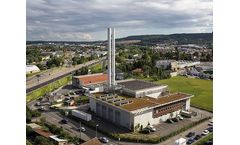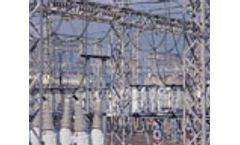Refine by
Combustion Plant Articles & Analysis
20 articles found
Policy Drivers: Tightening Industrial Emissions Regulations The global industrial sector is experiencing unprecedented regulatory pressure to optimize combustion efficiency and reduce emissions. The European Union's revised Industrial Emissions Directive (IED 2024/1785), effective August 4, 2024, mandates stricter requirements for Large Combustion ...
DuraStor Fast Power Installation at KIT Energy Lab 2.0. The Karlsruhe Institute of Technology (KIT)is one of the leading research institutions in Germany and is among the leading technical universities in Europe. Many well-known inventors and entrepreneurs have studied or taught there. ...
The Medium Combustion Plant Directive (MCPD) applies to over 140,000 plants in the EU, and regulates emissions from the combustion of fuels in plants with a rated thermal input between 1 and 50 MW. ...
ByENVEA
Capacity: 240 kpph A University Steam Plant owns and operates three gas and fuel oil fired boilers at their powerhouse located in BowlingGreen, Ohio. The steam plant combusts natural gas as a primary fuel and utilizes #2 fuel oil as a supplementary fuel to generate steam for heating and cooking at the University. ...
They are machines which will convert coconut shells into solid fuel as well as liquid combustible materials. Pyrolysis plants are used for this purpose. Using heat, in the lack of oxygen, coconut shells might be divided into different components. ...
Project aim is the use of woodchips produced by SRC's for co-firing and as a combustible for district heating ...
Individual plant with a thermal input greater than 50 MW are regarded as Large Combustion Plant and additional provisions apply, including mandatory Emission Limit Values that defi ne a minimum compliance standard during normal operation. ...
The problem: A cenosphere is a lightweight, inert, hollow sphere made largely of silica and alumina and filled with air or inert gas, typically produced as a byproduct of coal combustion at thermal power plants. On average 0.5% of the fly ash generated in a coal fired power station boiler are Cenospheres. ...
Designed to process animal remains 24 hours/day, 7 days/week, with the minimum of operator attendance. To optimise the plant’s performance and to enable waste to be processed and stored, irrespective of the status of the combustion plant, the waste is crushed into 50mm cubes. The material is then conveyed into a buffer hopper, which stores ...
Exhaust heat from energy consuming processes and exhaust stacks is returned through a metal heat exchanger it as process air, preheated combustion air or plant comfort heat. The critical design factors for any energy recovery product is the airflow rate, temperature of the air stream, permissible pressure drop of the application and the desired heat to be ...
The SRF submodels are validated with available data obtained from a laboratory-scale combustion facility. The furnace of a 600 MWe brown coal plant is further simulated. ...
Novartis found the effective solution in a Hofstetter combustion plant without heat recovery. .HOFSTETTER’s Task The back up system has to be available 100%, round-the-clock, even during power failure and during ignition without delay. Safety concept and explosion protection Leading over roof of the exhaust air Meeting the local regulations HOFSTETTER’s ...
HOFSTETTER’s Task Continuous flaring of the pyrolysis gas and vapours Complete combustion Heat recovery out of the flue gas Meeting the EEx-protection and safety requirements Fulfil the local regulations HOFSTETTER’s Solution The combustion plant HOFGAS®- IFM4c/1000 is connected to the pyrolysis gas and vapour pipeline.The pyrolysis gas ...
This report presents the results of a study that assesses the theoretical potential to reduce air emissions of SO2 and NOX that might have occurred had the best available techniques (BAT) and associated emission levels (AELs), as described in the large combustion plant best available techniques reference document (LCP BREF), been fully introduced in a set of ...
Overall-plant energy and exergy efficiencies both increase by 1.4% when the fraction of excess combustion air decreases from 0.4 to 0.15, and by 3.5% when the stack-gas temperature decreases from 149?C to 87?C. When both decreases occur, plant energy and exergy efficiencies both increase by 4.1%. If theoretical combustion air is ...
The greatest exergy destruction occurs in the engine itself, which accounts for 84% of total exergy destruction in the system.Keywords: stationary diesel engines, internal combustion engines, power plants, energy, exergy destruction, exergy efficiency, turbocharged diesel ...
This installation can provide about 90 percent of the primary energy. The combustion plant with fully automated kettle can be adjusted to the current energy demand. ...
The new technology of flameless high-temperature combustion of fuel on the basis of catalytic method has the advantages consisting of the ecological cleanliess of process, the growth of volume thermal stress of furnace space and the reduction of specific quantity of metal and boiler cost. Application of catalytic boiler plants allows to bring in the maximum ...
In the following paper, the kinetics of forming nitrogen oxides and other harmful substances in catalytic power plants are described. First of all, the equilibrium NOx concentrations are considered. The discrepancy between equilibrium concentrations and real results on NOx in the case of flame combustion are explained by a short duration of fuel-air mixture stay ...
On the one hand, due to the effective substitution of primary fossil fuels by RDF use in coal power plants and cement works, the co-incineration options show a large number of ecological advantages when they are compared with the alternative combustion in a MSWI. ...















